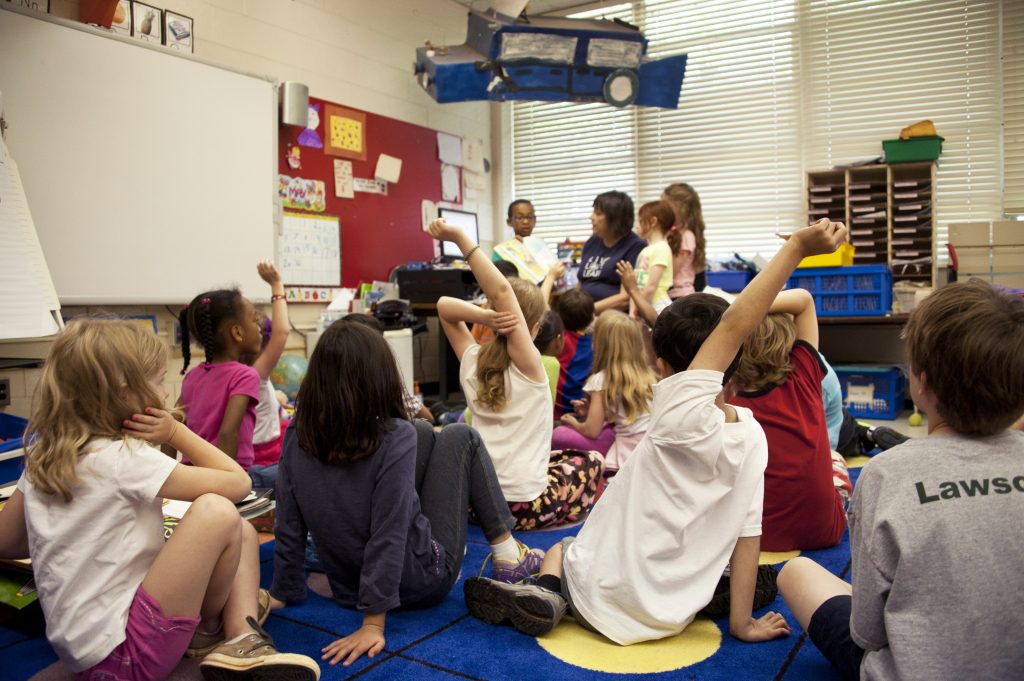Neurodiversity means celebrating and accepting the natural differences in how people’s brains work. It recognizes that people have different brain structures and ways of processing information, leading to diverse cognitive profiles. It encompasses a wide range of conditions which are classified as learning disorders, ADHD, autism spectrum disorder, and sensory processing issues. Neurodiversity emphasizes that these variations in brain function are not inherently superior or inferior to each other but simply represent different ways of experiencing and interacting with the world. It promotes the idea that neurological differences should be respected, accepted, and accommodated rather than viewed as deficits. Each neurodivergent child possesses unique strengths that, when nurtured, can lead to remarkable achievements. However, they may also face challenges that require understanding and support from educators and school staff. In this blog post, we will explore essential strategies for creating inclusive classrooms that empower neurodiverse children to thrive academically and socially.

Emphasize Understanding Over Behavior
Neurodivergent children may exhibit behaviours that seem disruptive or challenging. As educators, it’s crucial to look beyond these behaviours and recognize that they are merely the tip of the iceberg. These behaviours often reflect underlying struggles in language processing, sensory stimuli, emotions, and adapting to change. To support these students effectively, teachers must validate their feelings and provide a safe space for them to express themselves. By listening without judgement and helping them problem-solve, educators can foster emotional growth and improved self-regulation.
Create a Supportive Environment
Simple adjustments to the classroom environment can make a world of difference for neurodiverse students. Visual supports, such as displaying daily schedules and activity charts, provide structure and reduce anxiety. Starting the day with breathing or relaxation exercises can help ground kids and set a positive tone. Designating a relaxation area with noise-cancelling headphones gives children a safe retreat during overwhelming moments. Additionally, having a designated “safe” person that students can turn to fosters a sense of security and connection.
Support Executive Functioning Skills
Executive functioning skills are essential for planning, organizing, prioritizing, and initiating tasks. For neurodiverse children who may struggle in these areas, incorporating specific tools can enhance their learning experience. Checklists, dedicated subject binders, and reward systems help younger kids stay organized and focused. Timers provide visual references for task completion, while planners and calendars teach long-term project management. Using both paper and online planners can reinforce executive functioning skills both at school and home.
Promote Social Inclusion
Social support is as crucial as academic support for neurodiverse children to thrive at school. Creating an inclusive classroom community that embraces diversity, including neurodiversity, is a vital starting point. During lunchtime and playtimes, teachers and staff can implement mentoring programs and “Lunch Bunches” to encourage interaction among students. Praising kids for inclusive behavior and coaching peer models foster a nurturing environment where every child feels valued and accepted.
Establish Strong Parent-Teacher Partnerships
Collaboration between parents and teachers plays a pivotal role in supporting neurodiverse children. Encouraging parents to provide an “About Me” letter at the beginning of the school year can offer valuable insights into their child’s strengths, challenges, and stress indicators. This information helps teachers tailor their approach and provide personalized support. Maintaining open and ongoing communication between parents and teachers ensures that each neurodiverse child receives the attention they need to flourish both at home and in the classroom.
Provide Professional Development for Educators
To create truly inclusive classrooms, educators need to be equipped with the knowledge and tools to support neurodiverse students effectively. Schools should invest in professional development workshops and training sessions focused on understanding neurodiversity, recognizing different needs, and implementing evidence-based strategies. Empowering teachers with this knowledge not only benefits neurodiverse children but also fosters a more inclusive learning environment for all students.
Embracing neurodiversity in classrooms is an essential step towards creating an inclusive educational landscape where all children can thrive. By looking beyond behavior and understanding the unique needs of neurodiverse students, teachers can provide the necessary support to foster academic growth and social development. Simple environmental adjustments, executive functioning tools, and social inclusion strategies can make a significant difference in a neurodiverse child’s educational journey. Moreover, strong parent-teacher partnerships and ongoing professional development empower educators to create an environment that celebrates the diverse strengths and talents of every student. Together, we can build a future where neurodiversity is embraced, appreciated, and celebrated in our schools and society.


